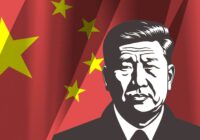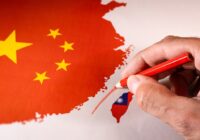The impact of financial sector reform in China will be far-reaching.
On Wednesday, June 19, US Federal Reserve chairman Ben Bernanke announced that the US central bank planned to end its five-year quantitative easing program later in 2013, when the US economy is expected to pick up. That day, the Standard & Poor's 500 stock index tumbled by more than 1%, and all major US indexes continued falling through the following week.
The Fed's intentions reverberated around the globe, as prospects for higher US interest rates and the end of easy money prompted capital outflows from China and other emerging markets. Indeed, Bernanke's speech helped catalyze a surprising liquidity squeeze in China — one that signals more change to come in that country's financial system and carries broad implications for the global economy, experts say.
On Thursday, June 20, China's overnight interbank lending rates — the rates at which banks borrow from each other — spiked to their highest levels ever. The seven-day repurchase rate reached a record 12.45%, closing at 11.62%, triple the year's average of 3.85%, according to Bloomberg. China's central bank, the People's Bank of China (PBOC), declined to inject liquidity to calm the markets. On Monday, June 24, the Shanghai Composite Index witnessed its biggest decline in four years and continued to drop the following day until the PBOC said finally that it would infuse more money to stabilize the system.
Gradually, an explanation emerged. The central bank allowed the squeeze on bank credit to rein in irresponsible bank lending to the so-called shadow banking industry. With trillions of dollars in reserves and money supply growing at 15.8% during the last year, China has no real liquidity shortage. Yet, small- to medium-sized enterprises are starving for capital, while bank loans fund speculative shadow banking wealth management products and questionable local government-backed projects instead, according to Xinhua, China's official news agency.
The PBOC's hard-line approach was a wake-up call, signaling that China's new leadership under President Xi Jinping and Premier Li Keqiang is preparing to undertake potentially significant structural reform of the economy, replacing fast growth — driven by low-cost, state-directed investment — with slower growth driven more by market forces, private sector enterprises and consumption. With the PBOC's attempt to rein in credit overexpansion, analysts are now lowering expectations that China will reach this year's 7.5% GDP growth target, already well below the average annual 10% rate of the last 30 years.
"The recent [liquidity] incident has really done lots of damage to global investors' confidence in the outlook for China," says Xianfeng Ren, Beijing-based senior economist for IHS Global Insight, a market research firm. According to Horst Loechel, professor of economics at Germany's Frankfurt School of Finance and Management and visiting professor at Shanghai's China-European International Business School: "When one-third of the global economy is driven by China, this means slower growth for the world."
Adjusting Expectations
Yet, slower but more sustainable Chinese growth — through structural reform — can be positive for China and the world, say experts. China's new leadership is preparing a slate of big reforms for discussion at the plenary of the Central Committee this fall, according to top business Chinese publication Caixin. Given the changes afoot, GDP growth rates should no longer be the hallmark by which investors evaluate China. "The rest of the world has accepted for so long the inevitable rapid Chinese GDP growth, that we need to adjust expectations," says Wharton management professor Marshall Meyer. "Even if growth rates go down, it's for the better, because useless investment will cease."
In his June newsletter, Michael Pettis, professor of finance at Peking University's Guanghua School of Management, agrees: "…China's growth model, which is not at all unique and for which there are many historical precedents, is usually wealth enhancing in its early stages, and then becomes wealth destroying once capital is systematically misallocated."
Indeed, with outstanding bank credit at double GDP levels, China now requires more investment to generate the same amount of growth. In the last decade, one renminbi (RMB) of investment created an equivalent amount of nominal GDP growth, but now, it takes three RMB of investment to create one RMB of GDP growth, according to IHS Global Insights. The declining impact is due in part to the larger size of the economy itself, and also to the expansion of stimulus spending and credit after the global financial crisis. In a November 2012 paper, the International Monetary Fund concludes that China needs to lower its investment by 10 percentage points of GDP to ensure its most productive use. The cost of the high investment has been borne by households, estimated at almost 4% of GDP per year, the paper notes. Meanwhile, small- and medium-sized enterprises — often the engines of economic growth — face high costs of capital, because low-cost bank lending is available only to large state-owned enterprises.
In the Shadows
Shadow banking, or lending that takes place beyond China's regulated banking industry, illustrates some of this phenomenon. Shadow banking totaled $6 trillion at the end of last year, or 69% of Chinese GDP, according to JPMorgan Chase. In a popular practice, shadow bankers raise funds from investors through wealth management products (WMPs), often offering 6% annual interest, compared to ordinary bank deposits carrying a low, government-set 3% rate. The shadow bankers, in turn, lend the proceeds from WMPs to small- to medium-sized enterprises or local government projects otherwise unable to get bank loans. The problem: WMPs are short-term, often maturing in three or six months, but are funded by these longer-term loans. To pay off investors when the WMPs come due, WMP lenders borrow from banks, which get their funds through the interbank lending market. The Chinese liquidity shortage in June was the PBOC's attempt to squelch the growth of WMPs.
Yet, shadow banking itself is not necessarily bad for China and may actually serve to apply "backdoor pressure to liberalize the financial system," says Pieter Bottelier, senior adjunct professor of China Studies at the Johns Hopkins University School of Advanced International Studies in Washington DC. "Many top financial leaders have wanted to liberalize interest rates, especially bank deposit rates, for a long time, but they have been met with political resistance, because control of interest rates is an instrument used by the [Communist] Party to provide hidden subsidies to state-owned enterprises."
Bottelier notes that China used a similar bifurcated market approach to reform the agricultural market starting in 1979, when the government allowed free market pricing of agricultural goods to coexist with controlled prices, and then liberalized prices when the free market grew to 80% of the total market. "My conjecture is that authorities are deliberately allowing dual pricing in the financial market to make it easier to abandon controlled interest rates once 80% of the market is at free market prices," he says. But with only about 50% of financial market intermediation at uncontrolled prices, it may take some time, he adds.
Necessary Risk
Raising bank deposit rates would provide a market-driven mechanism by which to introduce more lending discipline, experts say. The low cost of money now guarantees banks a 300 basis point profit for every loan, compared to 100 to 150 basis points for their Western counterparts, says Loechel. Low deposit rates enable Chinese banks to make loans often without regard to creditworthiness, including to inefficient state-owned enterprises.
To create an economy driven by more innovative and productive enterprises, China "really needs to develop banks willing to lend to the private sector and to undertake the credit risk that's necessary," notes Wharton finance professor Franklin Allen. Of course, Meyer adds, "once you liberalize those interest rates, the ability of the government to allocate resources to state-owned enterprises (SOEs) and projects that are priorities in the economic plan is diminished. Then, in effect, SOEs compete on a level playing field with private sector. If you're a manager of a traditional SOE accustomed to very low cost capital, and you have a very strong interest in preserving cheap money, you're going to lobby like hell against liberalization of rates."
Last year, the PBOC started liberalizing rates, giving banks the flexibility to set 10% plus-or-minus benchmark lending and deposit rates, and the next step could be to widen that band by 20%, says Loechel. [Editor's note: Following the publication of this story, on July 19, the PBOC eliminated the lower limit on loan rates, given the economic slowdown.] In addition, the government is likely to develop a corporate bond market, to privatize further at least one of the biggest Chinese banks, and to open the sector to foreigners to provide more competition to domestic banks, he notes. Financial sector reform is a necessity before China can internationalize the RMB — a natural step to take given the country's huge dollar reserves. "The contradiction between pressures to internationalize the RMB and a still immature financial system is one of the most interesting challenges facing the new leadership," according to Loechel.
The impact on the global economy of interest rate and financial sector reform in China will be far-reaching, Allen predicts. "That will underline the start of a significant change in the way that the international financial system operates," he says. "In China, lots of entrepreneurs and firms are willing to pay high interest rates, but at the moment, that demand doesn't see through to the global system. As the Chinese open their capital account, that's going to happen. As China starts playing a role in determining global interest rates, that will make it harder for the Federal Reserve and the European Central Bank to control things as they've done so far."
*[This article was originally published by Knowledge@Wharton.]
The views expressed in this article are the author's own and do not necessarily reflect Fair Observer’s editorial policy.
Image: Copyright © Shutterstock. All Rights Reserved
Support Fair Observer
We rely on your support for our independence, diversity and quality.
For more than 10 years, Fair Observer has been free, fair and independent. No billionaire owns us, no advertisers control us. We are a reader-supported nonprofit. Unlike many other publications, we keep our content free for readers regardless of where they live or whether they can afford to pay. We have no paywalls and no ads.
In the post-truth era of fake news, echo chambers and filter bubbles, we publish a plurality of perspectives from around the world. Anyone can publish with us, but everyone goes through a rigorous editorial process. So, you get fact-checked, well-reasoned content instead of noise.
We publish 2,500+ voices from 90+ countries. We also conduct education and training programs
on subjects ranging from digital media and journalism to writing and critical thinking. This
doesn’t come cheap. Servers, editors, trainers and web developers cost
money.
Please consider supporting us on a regular basis as a recurring donor or a
sustaining member.
Will you support FO’s journalism?
We rely on your support for our independence, diversity and quality.







Comment